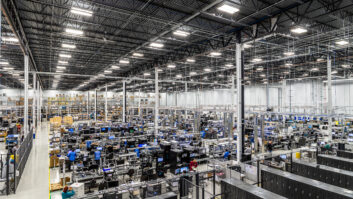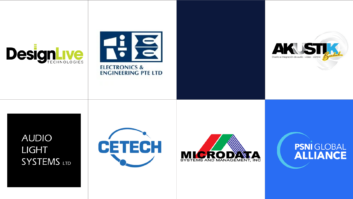The first part of Installation’s examination of the global supply chain crisis made it clear quite how extensive its impact has been across pro AV. From manufacturers facing protracted delays for vital components, to integrators having to rework project schedules already made problematic by the pandemic, it was apparent that the shortages had generated plenty of unwelcome challenges.
Opinion varied on how long the shortages were likely to endure, although even the most optimistic forecast suggested it wouldn’t be before late spring that the problem was likely to recede significantly. With the Omicron variant still running rampant worldwide and the crisis in Ukraine, there are bound to be renewed fears about the timescale for supply chain recovery.
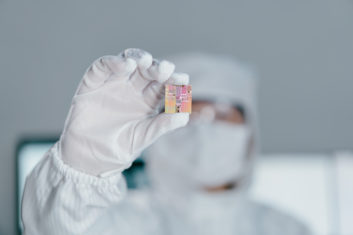 In this second round-up of industry insight, we hear more about the practical and logistical challenges encountered by companies over the past two years; the impact that shortages have had on the production and delivery of new products; and the extent to which supply chain strategies might evolve to minimise the damage done by any future problems of a similar magnitude.
In this second round-up of industry insight, we hear more about the practical and logistical challenges encountered by companies over the past two years; the impact that shortages have had on the production and delivery of new products; and the extent to which supply chain strategies might evolve to minimise the damage done by any future problems of a similar magnitude.
Andrew McKinlay, marketing director of lighting console and media control system manufacturer Avolites, outlines a period in which supply chain management has become more demanding and resource-intensive. But despite these challenges, he observes: “We have not seen a halt or reduction in our range of products we manufacture as yet, and this is something we are working hard to avoid. Supply chain management has exponentially increased in its complexity of component supply management since the crisis started… One of the many side effects has been the need to increase the resources working on supply chain management, which previously we managed with fewer staff. The workload of this team has increased several fold compared to pre-pandemic levels, and we don’t see this changing during 2022.”
Sourcing parts has also become a more expensive affair. “In order to have a degree of confidence in component supply, we have had to resort to forward-purchasing by many months – in some cases at significantly higher prices,” he says. “This puts additional strain on financial resources, as well as our manufacturing, who have had to become adept at flexibility to accommodate the constantly changing situation. All this at the same time as coming out of an 18-month global pandemic.”
SIGNIFICANT IMPACT
Like many other observers, McKinlay thinks the supply chain problem will last for a while yet. “We view the crisis still having a significant impact through to the end of 2022 at least,” he says, while pointing to the company’s research that indicates the problem could lessen from summer onwards. In the meantime, “from a holistic business perspective, the usual forecasting and planning will be very difficult. As a result, management of the business fundamentals on a monthly basis will be the focus of the management team” – thereby ensuring that the company is “in a strong position to take advantage of opportunities in the market as things begin to open up again”.
Interactive technology, digital signage and software solutions company Boxlight has also had to think carefully about its long-term supply requirements. Chief technical officer Shaun Marklew remarks: “The main effect of the shortage has [resulted in us having] fast-tracked our development schedule to look at alternative, higher performance chipsets. The impact on supply has meant that we are forecasting and sourcing components up to 12 month ahead and purchasing these components to secure supply.”
Nonetheless, whilst he expect the problem to continue for at least the next 12 months, Marklew strikes an optimistic note: “Our outlook is still very positive. We have increased business in 2021 significantly and have been able to have consistent supply due to careful planning. Moving into 2022 we have secured supply; however, it is difficult to predict if we will have supply issues even with planning so far in advance. We are seeing delays in launching new products and models as our R&D developments plans are now taking up to 50% longer.”
RISING COSTS
John Belcher, business development manager at AV technology provider Anna Valley, notes the “rising costs of raw material and transportation,” and the impact of shortages on project planning. Consequently, he says: “We’re in constant communication with a range of suppliers so we know where the stock is sitting in warehouses, what items to avoid when designing AV solutions, and [so that we can work] around the extended lead-times by project managing to allow for the late arrival of certain products. But we still need AV managers and project teams to take the current situation into account and, where possible, increase the contingency in their schedules to provide as much time as possible to work around the supply issues.”
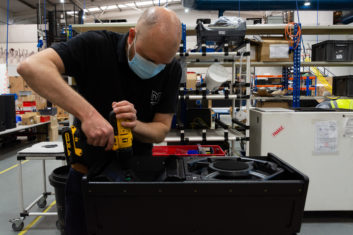 Bob Michaels, CEO of intelligent AV distribution technology specialist ZeeVee, indicates that one specific inventory decision served to mitigate the impact. “ZeeVee has managed very well during the past year having made a strategic decision, eight to ten months ago, to produce additional inventory of a number of our IP-based product offerings to meet what we thought at the time would address post-Covid demand,” he says. “As a result, we continue to be able to satisfy short-term needs for many of our integration partners and are now even moving stock to our new European subsidiary to reduce shipment times to meet local requirements.”
Bob Michaels, CEO of intelligent AV distribution technology specialist ZeeVee, indicates that one specific inventory decision served to mitigate the impact. “ZeeVee has managed very well during the past year having made a strategic decision, eight to ten months ago, to produce additional inventory of a number of our IP-based product offerings to meet what we thought at the time would address post-Covid demand,” he says. “As a result, we continue to be able to satisfy short-term needs for many of our integration partners and are now even moving stock to our new European subsidiary to reduce shipment times to meet local requirements.”
Now the challenge is to satisfy “an influx of new business” that has followed on from pandemic-related “pent-up demand”. Michaels notes: “This window of opportunity for manufacturers, of course, is clouded by the shortages associated with electronic components. We feel we will be in a relatively good position inventory-wise based on our previous production planning that will hopefully carry us until shortages start to dissipate in Q2.”
There is a general expectation that supply chain arrangements will evolve as a result of the crisis in favour of using multiple processor types and forging additional supplier relationships to help reduce the impact of any further shortages.
McKinlay remarks: “Non-reliance on single processor types or brands, multiple processor options for PCBs, and multiple relationships with component suppliers will all be outcomes and changes to the supply chain approach.”
Maintaining a larger – and more localised – stock inventory is bound to be another consequence. Marklew notes: “During 2021 we increased our storage capacity in Europe and the US, and have been building inventory to manage the high demand. [Looking ahead] I see the key challenges being that forecasting so far in advance, securing components, and increased storage and logistics costs money, and this has an impact on cashflow for all manufacturers. Some smaller manufacturers may find this very challenging, which will only put even more pressure on our industry.”
With the current supply chain problems “exacerbated by shipping and transport delays and difficulties”, Belcher suggests that the industry could shift towards more regionalised processes: “The pandemic may prompt manufacturers and distributors to […] move towards more assembly being done in-region and more stock stored across the world. We’ve been a bit spoilt in the past as we were able to order equipment from across the world at the last minute, and have it arrive within just a few days or weeks. Now, manufacturers, distributors and resellers will need to work together to forecast, plan and prepare for projects in advance.”
IMMENSE EFFECTS
For ZeeVee, Michaels describes the long-term effect on its manufacturing approach as “immense”. He adds: “No one speaks of ‘just-in-time’ manufacturing anymore. Because lead-times can range from 36 to 90 weeks, we have to plan our production and commit to purchases long before we are aware of the commercial success of a particular product. Often, we have to purchase components a year or more before we will realise revenue from an assembled product being sold. Every investment has to be carefully considered because of this ‘time-to-revenue’ issue.”
“The key thing is planning and expectations,” says Marklew. “It is very difficult in an industry where customers have been used to placing orders and receiving goods in days to expect them to plan and forecast months ahead. The best we can do is communicate with our partners and end-users to expect longer lead times and plan for this by placing orders in advance or forecasting what is required.”
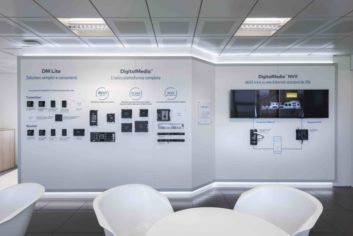 There is also the suggestion that broader collaboration with other affected sectors could achieve better results, especially with regard to government lobbying. McKinlay says: “Joining forces with other major industries – eg automotive, IT and telecoms industries – to present a united front of technology business sectors to governments might be a way for future events of this magnitude to be mitigated against. In a global crisis like the one we are facing in the supply chain right now, size really matters.”
There is also the suggestion that broader collaboration with other affected sectors could achieve better results, especially with regard to government lobbying. McKinlay says: “Joining forces with other major industries – eg automotive, IT and telecoms industries – to present a united front of technology business sectors to governments might be a way for future events of this magnitude to be mitigated against. In a global crisis like the one we are facing in the supply chain right now, size really matters.”
Meanwhile, there are already signs of increased diversification regarding component production after the geographical consolidation of the last ten years. As Michaels remarks: “The last decade has been interesting in that there has been an immense concentration of truly leading-edge silicon device fabrication in just two places: Taiwan with TSMC and South Korean with Samsung. SMIC in China is in the hunt, but not at the same level of the first two. No other fabs produce leading-edge devices like those two plants. So much of the world’s economy is dependent on these two facilities that a sequence of events, such as occurred in early 2020, has jeopardised too much in terms of the global standards of living.
“We believe that there is general recognition of this, and a genuine effort to distribute chip-fabrication to more and varied locations. In fact, there is more fabrication capacity under construction in the US now than has occurred in more than a decade. When this capacity comes on-line, not only will the general world economy (which is highly dependent on sophisticated electronics) be more robust and resilient, but there will be a new round of performance, capability, price and innovation associated with more fabs and more varied product from them.”
So it’s positive note to end on, and an observation worth keeping in mind during what could still be a decidedly turbulent 2022.
